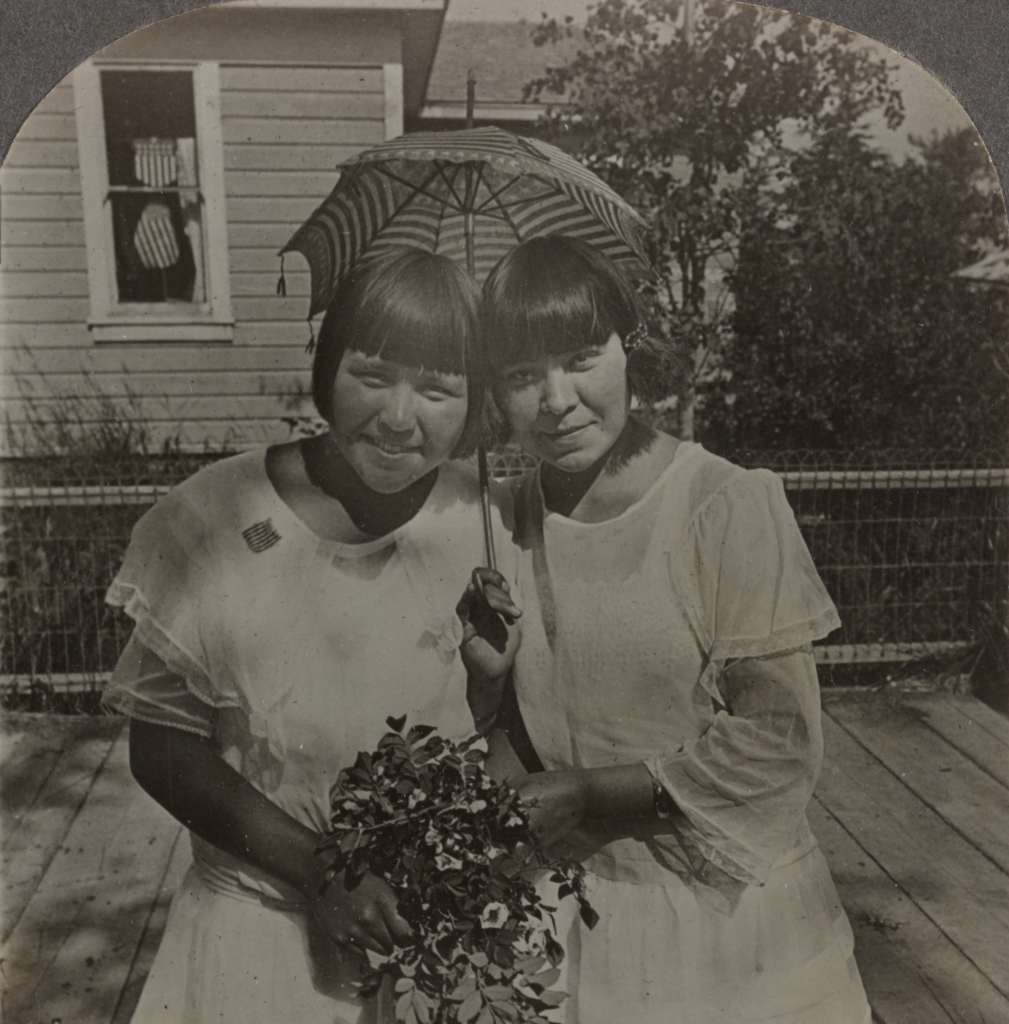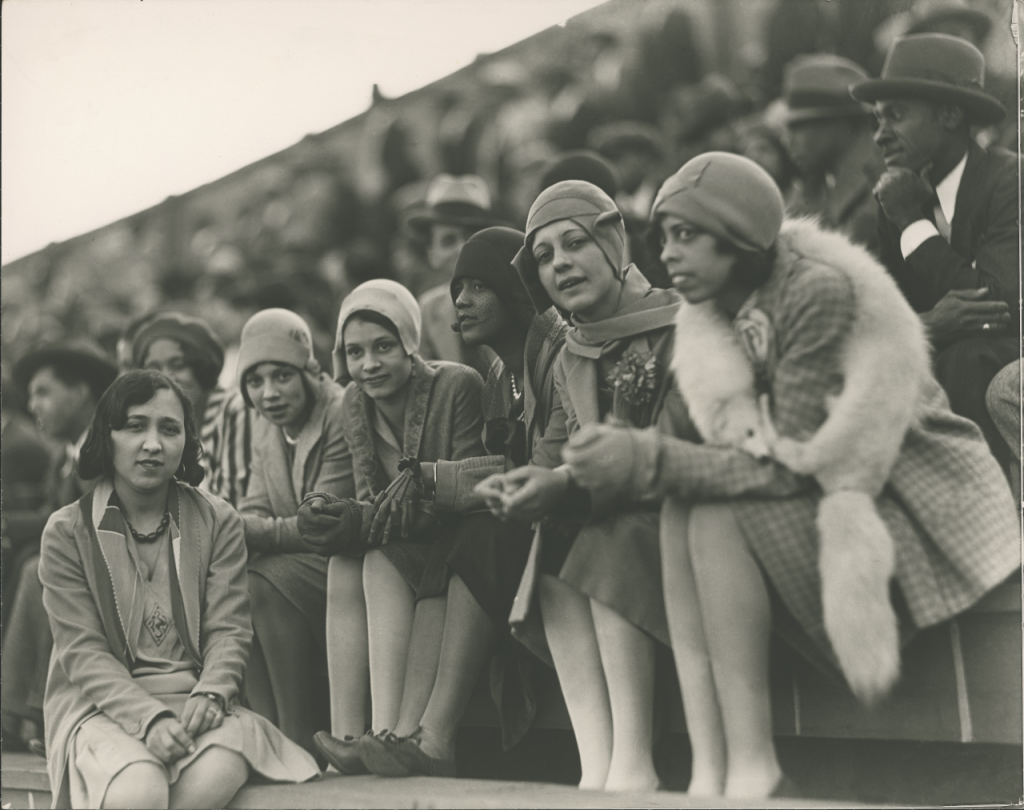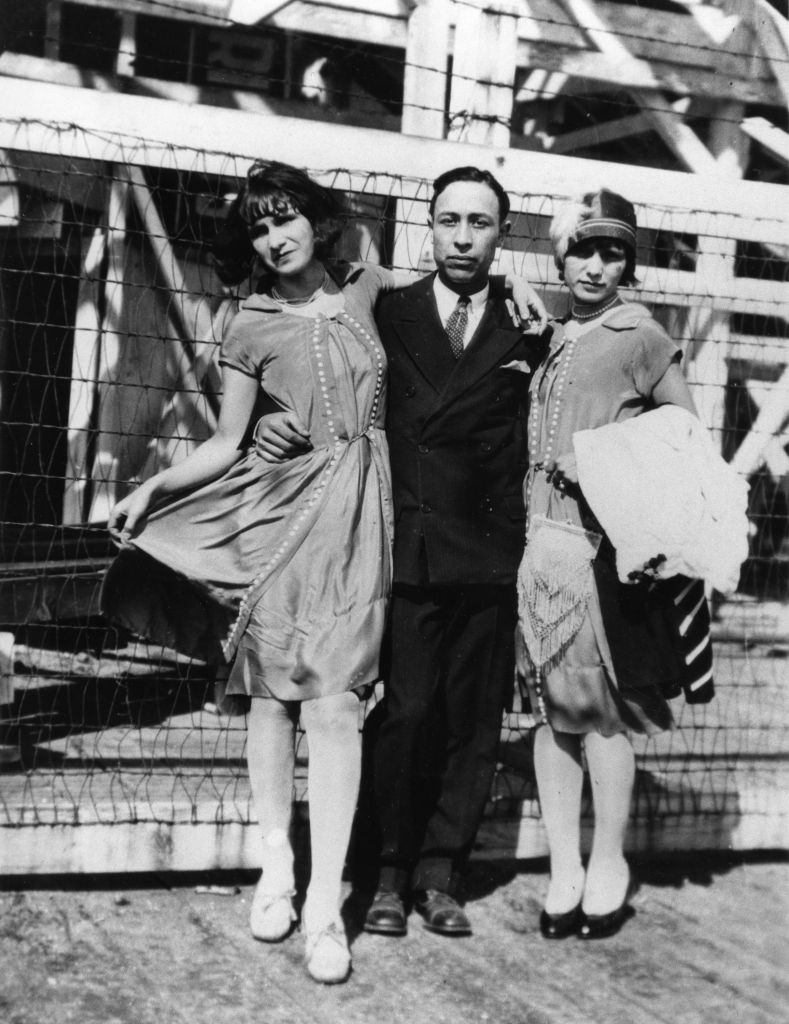Background
Perhaps more than any other era in American history, the 1920s saw a dramatic shift in women’s appearance. Young women wore clothes and hairstyles significantly different than their mothers. This massive change was made possible by expanding fashion and beauty industries. Women purchased ready-made versions of the latest styles at reasonable prices through catalogs and at department stores. They also bought lipstick, rouge, and other makeup products at drugstores. Lower prices allowed women from a variety of economic backgrounds to embrace the latest styles. The expanding advertising industry helped take trends national. Fashion and cosmetics advertisements targeted young women in magazines, on radio stations, and on billboards across the nation.
The most popular styles embodied the new generation’s focus on unconventionality and sexual freedom. Young women of the 1920s felt empowered by the vote, birth control, mass media, cars, and other modern conveniences not necessarily available to their mothers. Short skirts and short hair were a direct rebellion of traditional ideals of womanhood. Even underwear changed as young women chose bras over restrictive corsets. But the styles were also practical. The bob cut required less attention than long hair and fancy updos. And knee-length skirts made it easier to dance, climb out of cars, and explore the world. Fashions were also designed to attract a prospective partner. The rise of dating culture meant young women not only dressed up for themselves but also for the enjoyment of others.
About the Image
These photographs show women of diverse backgrounds embracing the newest fashions of the 1920s. This combination of images highlights the fact that women across communities embraced the same trends, such as bobbed hair, high heels, and short skirts.
Vocabulary
- bobbed hair: A short haircut for women.
- consumer: A person who buys things.
- corset: A tightly fitting piece of underwear that covers a woman’s chest through the hips. Designed to create a curved shape with a small waist.
- cosmetics: Beauty products like makeup and face cream.
- ready-made: Mass produced clothing made in different sizes so that it could be sold to lots of people through catalogs and in stores.
- stereotype: A popular, but oversimplified version of a type of person or thing. Stereotypes are often offensive and meant to mock the subject.
- updo: A hairstyle in which long hair is arranged on top of the head in an appealing way.
Discussion Questions
- What do you notice in each image? What are the women wearing?
- Why do you think women preferred shorter skirts and hair in this era? What does this tell you about youth culture in the 1920s?
- What do you notice about the ages of the women? Why is this significant?
- What do you notice about the race or ethnicity of these women? Why is this significant?
- What are the women doing in the pictures? How does this further demonstrate the ways young women embraced modern life?
Suggested Activities
- Add to this photograph set by pulling images from the Anna May Wong, Zora Neale Hurston, and Ella May Wiggins life stories. How did each woman embrace new styles that reflected modern life? How do they add to the story presented in these three images?
- Explore the history of young womanhood in the 1920s by combining these photographs with the Life covers depicting flappers.
- Learn more about the multimillion-dollar beauty industry, particularly for African American women, by combining this resource with the life story of Madam C.J. Walker.
- Compare these images with the images of young women in the Progressive Era, including the recreational outfits and the photographs of Clara Lemlich, Nellie Bly, and Mary Church Terrell. How did fashions for young women change from one generation to the next? Why is this significant?
Themes
AMERICAN CULTURE









